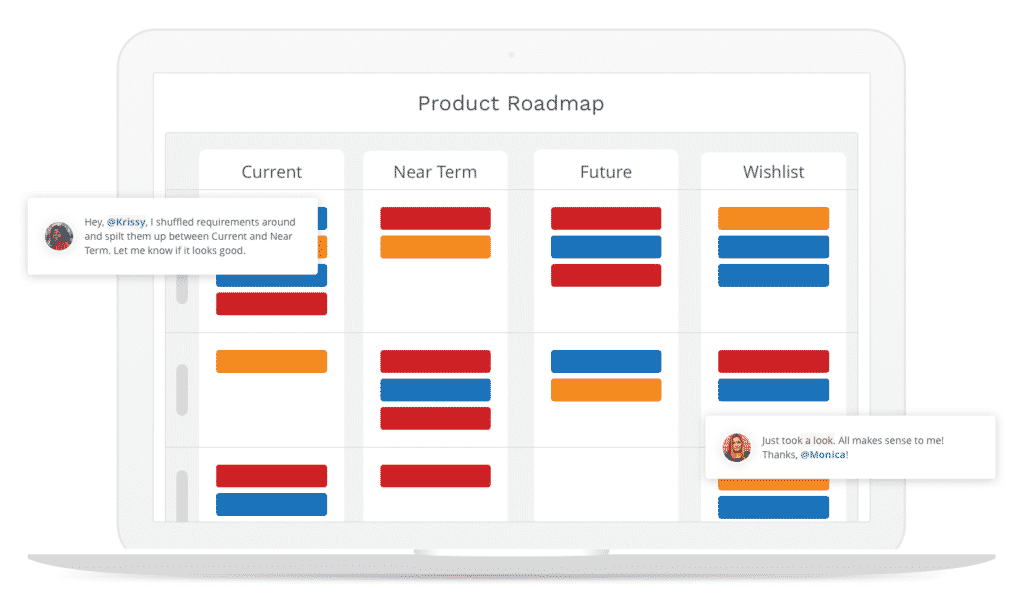The first step in building a roadmap is selecting the appropriate style.
The first step in building a roadmap is selecting the appropriate style. Thousands of roadmaps have been built with ProductPlan, putting us in a unique position to comment on various formats. Even though the roadmap style permutations are endless, we see the following three roadmap styles most commonly: Timeline, Roadmap without Dates, and Kanban.
In this chapter, we will explain when and where these styles make sense and what some of the advantages and shortcomings are of each roadmap type.
Timeline-Based Roadmap
Every product manager has heard this question before: “What are you doing and when will it be done?” If your CEO asks you this question, a timeline-based roadmap can be a great tool for you and help you to respond to that question.
A timeline-based roadmap shows your initiatives relative to each other in the context of time. It visually communicates how long you intend to focus on certain initiatives and when you plan to complete them. Typically, you arrange your initiatives in a bar chart on a grid that represents a specific timeframe.
Although there might be dates on your roadmap, from a product management standpoint it is often a good practice to keep your dates high-level and not too specific. For example, show initiatives spanning a few months without designating exact start and end dates. You need to manage expectations with stakeholders, and the more specific the timeline, the more you are setting expectations for delivery of specific dates and capabilities.
Timeline-based roadmaps are great to visualize product schedules among the different tasks at hand. However, a common pitfall for timeline-based roadmaps is to focus on deadlines rather than emphasizing strategic priorities.
Roadmap Without Dates
Keeping in mind the saying, “It’s not the destination but the journey.” Removing date constrictions from your roadmaps allows you to better focus on modeling the process — how you can achieve your end goal. While there are a lot of commonalities between timeline-based roadmaps and roadmap styles without dates, the important differentiator here, as you can see from Figure 14, is that you do not associate any dates with your initiatives.
You can group similar items together in the same swimlane to better emphasize related initiatives. The length of each initiative, depicted as bars in the example roadmap above, could represent their strategic importance or rough effort level. Even though you don’t need to commit to a specific deadline, a roadmap without dates still allows you to order all involved initiatives sequentially. You can model the process based on what must get done first. Then, put your initiatives in context with everything else going on.
Kanban-Style Roadmap
Kanban is a project management framework that got its start in “just in time” manufacturing. It’s now frequently used to show a roadmap, priorities , and progress. Kanban matches the amount of work in progress (WIP) to the team’s capacity. Therefore, it gives teams more flexible planning options, faster output, clear focus and transparency throughout the development cycle.

A key tenant of kanban is to limit the amount of work in progress. WIP limits can highlight bottlenecks and backups in the team’s process due to lack of focus, people or skill sets.
For a Kanban-style roadmap, you want to show stakeholders the status and priorities for each stage of your development.
For example:
- Approved
- Validated
- Ready for Estimation
- In Progress
- Ready
Looking for roadmap inspiration? Check out our free roadmap templates.